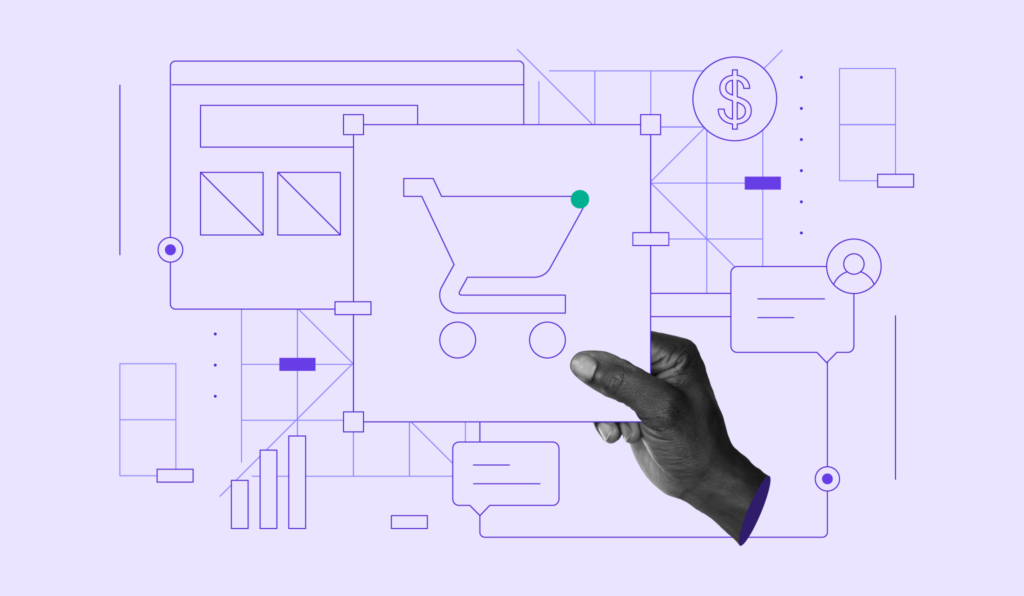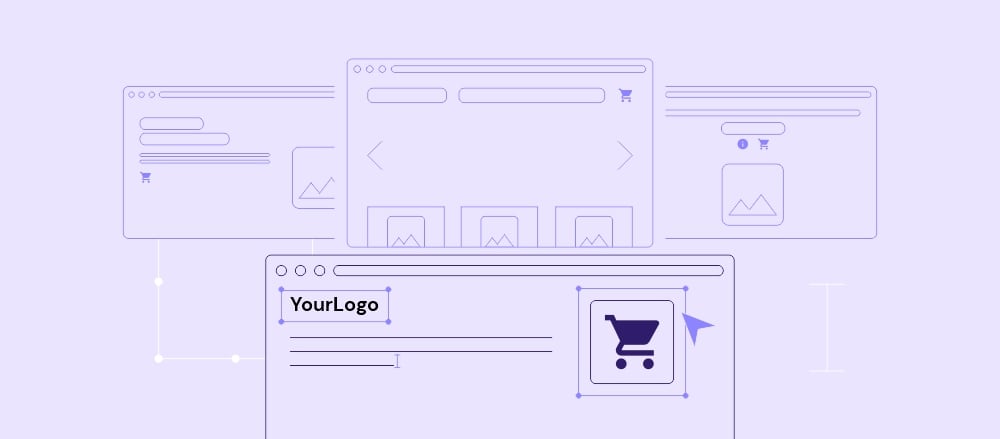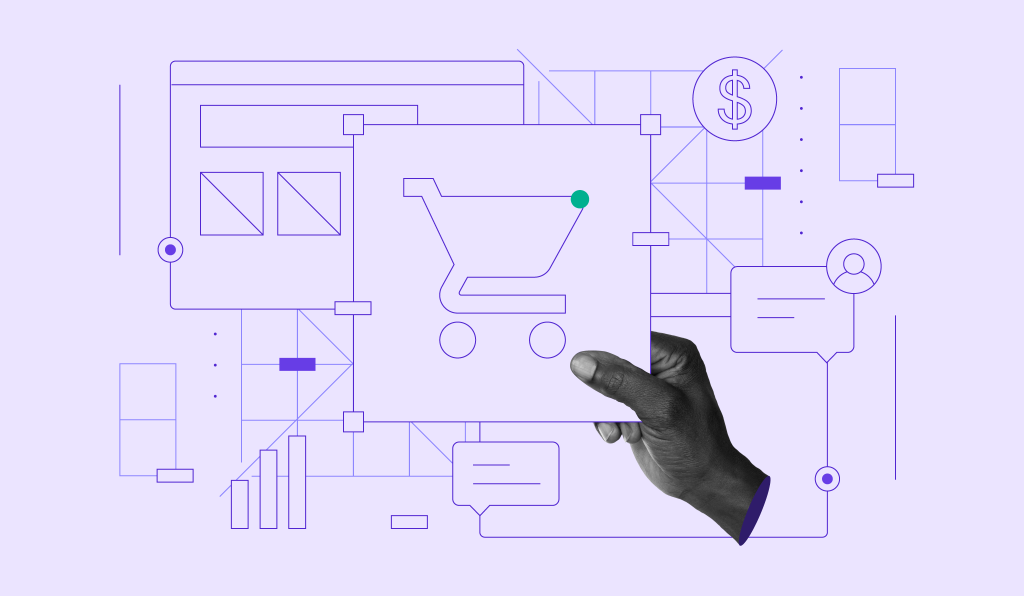How to sell digital art online and make a profit in 2025
You love creating digital art, but you’re unsure how to monetize your craft?
Whether you draw in Procreate, design in Photoshop, or create 3D models, selling digital art is a way to turn your creativity into income.
This guide on how to sell digital art is made for digital artists who are just starting out. We’ll walk you through everything you need to know – from choosing what to sell, setting up shop, and marketing your work to actually making your first sale.
What is digital art?
Digital art refers to any artwork created using digital tools – whether with an iPad and stylus, a desktop drawing tablet, or 3D rendering software. Unlike traditional paintings or sketches, digital art exists in a file format, which makes it easy to sell online as downloads, prints, or NFTs.
What different types of digital art are there?
Digital art comes in many forms, and some types tend to sell better than others.
The most common types of digital art include:
- Digital paintings and illustrations
- Printables and templates
- Game assets and pixel art
- 3D models and assets
- Animations and GIFs
How to sell your artwork as digital products
If you’re looking for a low-maintenance, scalable way to earn from your artwork, selling digital products is an ideal choice. With the right platform, you can set up a store, automate deliveries, and generate income with minimal ongoing effort. Here’s how it works:
- Create your artwork. Start by designing digital files such as digital paintings, 3D models, illustrations, or pixel art.
- Choose your selling platform. Use online selling sites like Etsy, Gumroad, or Creative Market, or set up your own website for better flexibility and control.
- Optimize your listings. Include high-quality images of your artwork, clear product descriptions, and pricing details. Many platforms let you offer bundles for better value.
- Set up automatic downloads. Once your artwork is uploaded, buyers can download it immediately after purchase. No physical shipping is required, which makes it easy to sell on a global scale.
Why sell your art as digital products
Selling digital products is a great way to generate passive income, but like any business model, it has its advantages and challenges. Let’s take a look at the key pros and cons:
Pros:
- No production costs. You don’t have to spend money on materials or shipping. Once the artwork is ready, you can sell it endlessly without additional costs.
- Instant delivery. Customers can download their purchase immediately, which is convenient for both you and your buyers.
- Passive income. After setting up your listings, you can earn money in your sleep. Each download is an additional sale, without any further effort on your part.
- Scalability. As you build your portfolio, you can increase your earnings without needing to create new products every time.
Cons:
- High competition. Since digital art is easy to create and distribute, you’ll face a lot of competition. To stand out, you need to offer unique artwork and market it well.
- Piracy risk. Digital files can be easily copied or shared without permission, so it’s important to watermark your previews or set up licensing agreements.
Best-selling types of digital art
While some digital artworks are created for display only, others like game design, branding, or social media content, serve more practical purposes. Understanding these different types helps you choose the best format for your style and audience, and start making money as an artist.
Digital paintings and illustrations
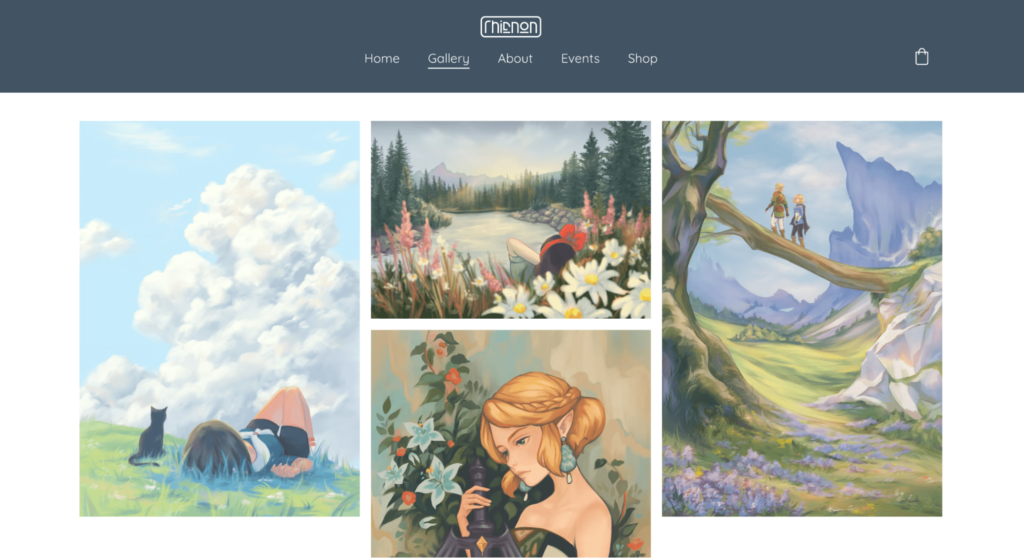
- What it is: Art created using digital drawing software like Procreate, Photoshop, or Clip Studio Paint. This category includes illustrations, character designs, concept art, and fine art pieces.
- Best formats: High-resolution PNG, JPEG, or layered PSD files that buyers can print or use in their own projects.
- Why it sells well: Digital paintings and illustrations are some of the most versatile art forms. They can be used for a wide range of applications, such as wall art, book covers, album covers, and even brand illustrations. This makes them a great option for artists who want to create a variety of products from one piece of artwork.
Printables and templates
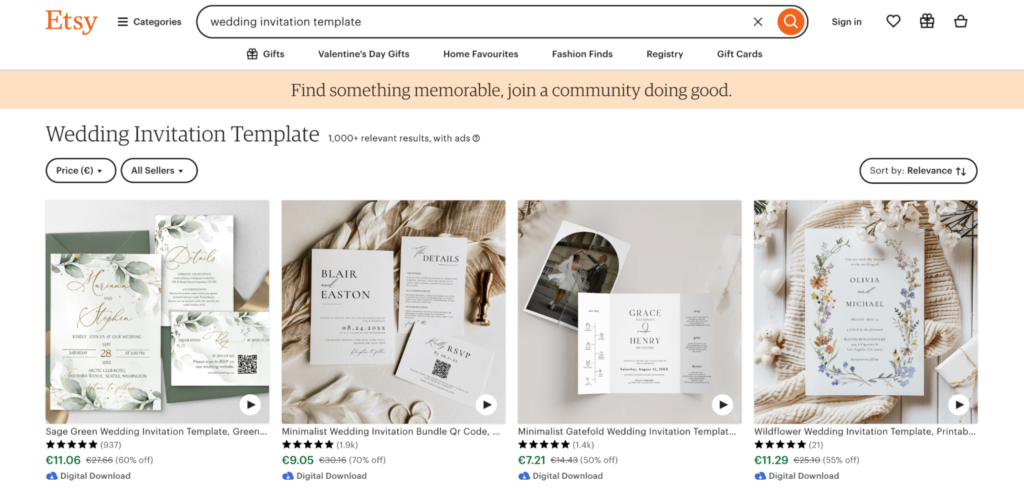
- What it is: Pre-made, downloadable files like planner pages, social media templates, wedding invitations, and business card designs. These designs are typically created with vector software (like Adobe Illustrator) or in Photoshop.
- Best formats: PDF, PNG, SVG, or Adobe Illustrator (AI) files, depending on the type of template and how the buyer plans to use it.
- Why it sells well: Printables are an excellent entry point for new artists because they’re relatively simple to create and highly marketable. People love the idea of printable art because it’s instant gratification – no waiting for shipping, and they can print it themselves at home.
Game assets and pixel art
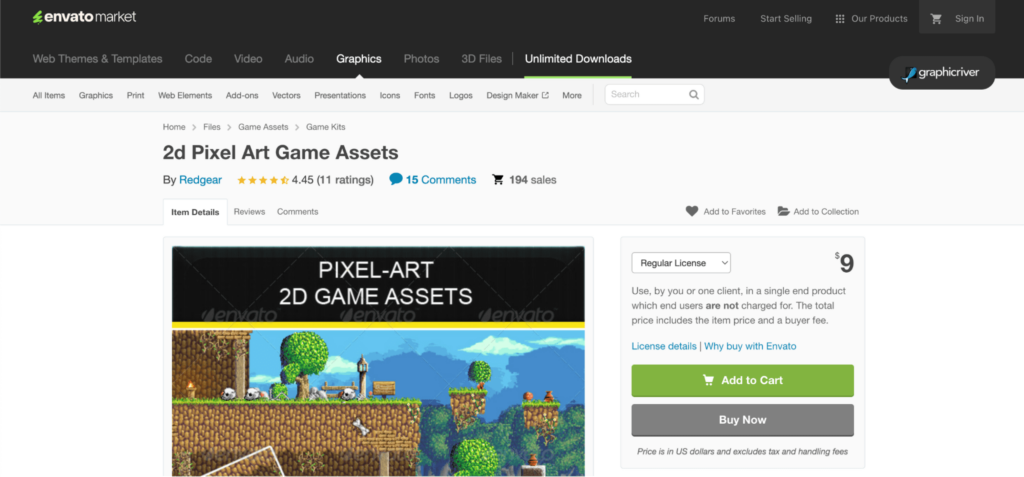
- What it is: 2D or 3D assets used in video games, including sprites, backgrounds, UI elements, animations, and characters. Pixel art, in particular, has a retro charm and is a favorite among indie game developers.
- Best formats: PNG for 2D assets, and OBJ, FBX, or DAE for 3D models.
- Why it sells well: As indie game development continues to grow, there is an increasing demand for unique game assets that developers can use in their own projects. Whether it’s pixel art for a retro game or 3D assets for virtual environments, these assets save developers time and money.
3D models and assets
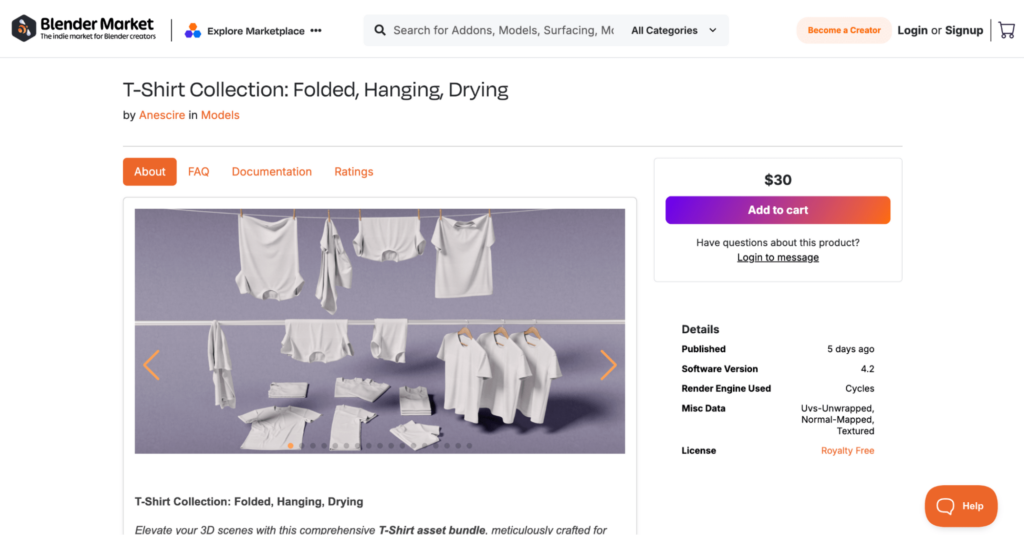
- What it is: Three-dimensional digital models used for games, virtual reality (VR), augmented reality (AR), and 3D printing. These can include character models, environments, and props.
- Best formats: STL for 3D printing, OBJ, FBX, or GLTF for game development and AR/VR.
- Why it sells well: With the growing interest in 3D printing and AR/VR technology, there’s a huge market for 3D models. These models are essential for game development, virtual environments, and 3D printing enthusiasts.
Animations and GIFs
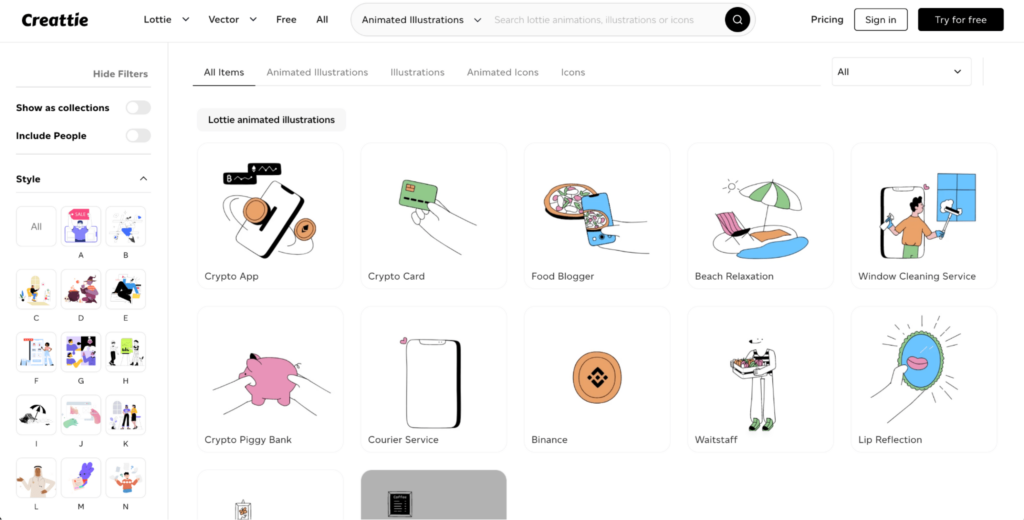
- What it is: Animated visuals used for websites, social media, or digital marketing, including GIFs, short animations, and looping visuals. They’re often created using After Effects, Blender, or similar tools.
- Best formats: MP4, GIF, or Lottie JSON files for animations.
- Why it sells well: Animations and GIFs are used by content creators, brands, and social media marketers who need engaging visuals. These assets are perfect for use on websites, advertisements, Instagram stories, or even as animated logos.
How to sell your artwork as physical products
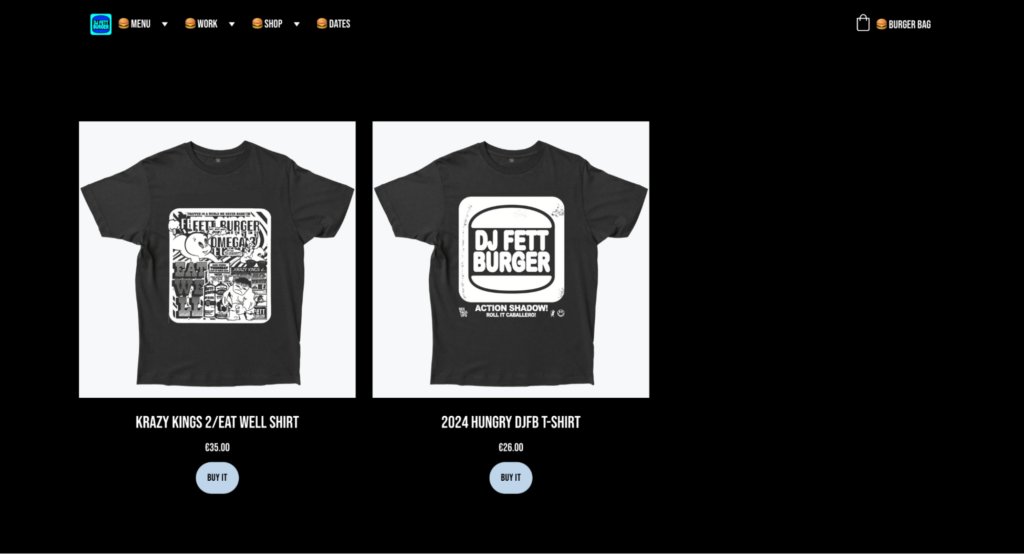
Selling physical products based on your digital art typically involves using a print-on-demand (POD) service. These services print your designs on various items, such as posters, t-shirts, mugs, and more, only when customers make a purchase.
Generally speaking, to get started you need to:
- Create your artwork. Design your artwork as you normally would, ensuring it’s high resolution for printing. Remember to save your work in both RGB (for digital-only use) and CMYK (for printing).
- Choose a print-on-demand service. Platforms like Printful, Redbubble, or Society6 handle printing and shipping for you.
- List your designs. Upload your artwork to the platform, choose the products you want to sell, and set your prices.
- Market your products. Share your designs on social media to drive traffic to your store.
Why sell your art as physical products
Selling your artwork as physical products lets you offer unique, physical versions of your designs. Whether through print-on-demand services or limited edition signed prints, this approach also has its own advantages and drawbacks:
Pros:
- No inventory or upfront costs. You only pay for production and shipping when a customer buys.
- Broader appeal. Physical products like posters, mugs, or t-shirts often attract a wider range of customers who may not be interested in digital art alone.
Cons:
- Lower profit margins. Print-on-demand services typically take a percentage of the sale. You’ll need to set competitive prices, which can reduce your profits.
- Quality control. Since you’re not physically handling the products, you rely on the POD service to ensure the quality of your prints and merchandise.
How to sell digital art as NFTs
NFTs (non-fungible tokens) are unique digital assets that are stored on a blockchain, enabling you to sell your digital artwork as one-of-a-kind collectibles.
NFTs essentially tokenize your artwork, making it verifiably unique and tradeable. When someone buys an NFT, they own the digital artwork’s proof of authenticity – which can be sold or resold on the market.
NFTs are becoming a mainstream way to sell digital art because they offer a new way to generate revenue. Unlike traditional art, NFTs let artists sell unique pieces and even earn royalties when their work is resold.
Start by minting an NFT like this:
- Create your artwork. Ensure that your digital art is high quality and unique.
- Choose an NFT platform. Popular platforms for selling NFTs include OpenSea, Rarible, and Foundation.
- Mint your NFT. Upload your artwork to the platform and convert it into an NFT. This step is called minting.
- Set a price. You can either set a fixed price or enable the artwork to be auctioned.
- Promote your NFT. Use social media and NFT communities to build hype for your artwork.
NFTs offer a unique way to sell digital art by leveraging blockchain technology to verify ownership and authenticity. While they present exciting opportunities, it’s important to weigh the benefits against the challenges:
Pros:
- Higher earning potential. NFTs can be sold for substantial amounts, especially if your art is in demand.
- Royalties. You can set up a royalty fee so that you earn a percentage every time your NFT is resold.
Cons:
- Volatility. The NFT market can be unpredictable, and prices can fluctuate.
- Transaction fees. Gas fees (transaction costs) can be high, especially on popular blockchains like Ethereum.
Pro tip
Before minting your first NFT, research platform fees and gas costs, as these can vary depending on the blockchain. For example, Ethereum tends to have higher fees, while alternatives like Polygon or Solana offer more affordable options for new artists.
How to build a website to sell digital art
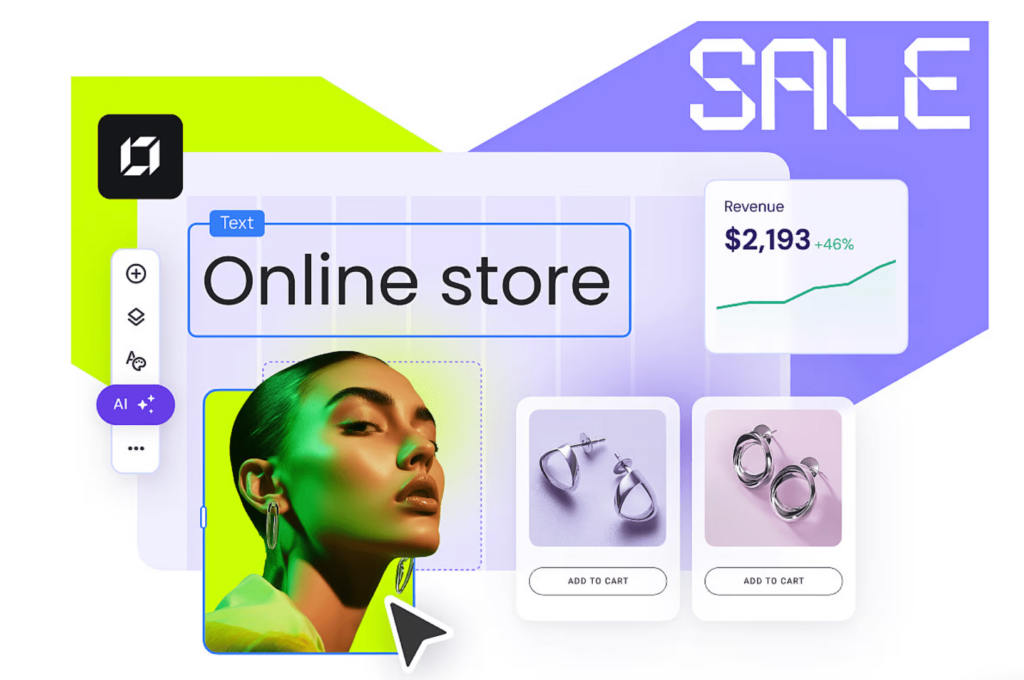
A website provides full control over your sales and branding. It lets you showcase your portfolio, set your own prices, and build a direct relationship with your customers.
Some of the key reasons to build your own website for selling art online include:
- Control over pricing and branding. Customize everything to match your art style and pricing model.
- No marketplace fees. You keep 100% of your profits, unlike on platforms that take a commission.
- Professional hub for your portfolio. Create a place where potential customers can browse your work and easily purchase it.
Chances are that you don’t want to spend too long developing your website. We recommend using beginner-friendly tools like website builders to take your art business online fast.
Build your store with Hostinger Website Builder like this:
- Get a domain and hosting. Choose a unique domain name, such as yourname.com, and a hosting plan.
- Use Hostinger Website Builder. No coding required – simply describe your store in a few sentences and the AI will create an online store complete with placeholder content.
- Upload your digital art. Add your digital products in various formats, like PNG, JPG, or SVG.
- Set up a payment system. Connect your store to payment gateways like PayPal or Stripe.
- Optimize with SEO. Use keywords in your product descriptions and page titles to drive organic traffic.
For more detailed information, follow our guide on how to build your store with Hostinger Website Builder.
How to market your digital art
Creating stunning digital art is only half the battle – getting it in front of the right audience is just as important. Without effective marketing, even the most talented artists may struggle to generate sales.
By promoting your work strategically, you can attract more buyers, build a loyal customer base, and increase your income over time. Here are some proven ways to market your digital art:
- Leverage social media. Platforms like Instagram, Pinterest, and TikTok let you showcase your work visually, connect with art communities, and drive traffic to your store – all without spending a dime on ads.
- Join art and gaming communities. Platforms like ArtStation, DeviantArt, and Discord groups are great for networking with other artists and potential clients who are actively looking for digital artwork.
- Offer a freebie to grow your audience. Providing a free digital download, like a desktop wallpaper or social media template, can encourage people to sign up for your email list, giving you a direct way to promote new products.
- Optimize your store and listings for SEO. Using relevant keywords in your product descriptions and page titles helps your work rank higher on search engines and marketplace searches, making it easier for customers to find you. We have a whole guide on eCommerce SEO so make sure to check it out.
- Run limited-time discounts or bundle offers. Urgency can drive sales, and bundling products together can increase the perceived value of your work. Discounts can also attract first-time buyers who may later become repeat customers.
Is selling digital art profitable?
Yes! Digital art is one of the few creative fields where you can scale your income without increasing production costs. Whether you sell one or a thousand copies, your expenses remain the same – making it a fantastic option for passive income.
But how much can you actually make? That depends on several factors, like your pricing strategy, the platforms you sell on, and how much time and effort you put into marketing your work.
Some of the key reasons why selling digital art is profitable include:
- No production costs. Unlike physical artwork, you don’t need to buy materials like paper, ink, or canvas. Once you create a digital file, you can sell it an unlimited number of times without additional cost.
- No inventory. With digital products, you don’t need to worry about keeping stock or dealing with shipping. Once the artwork is ready, it’s ready to sell over and over.
- Instant delivery. Customers can instantly download their purchase, making it convenient for them and automated for you. No packaging or waiting for shipping.
Here’s a rough estimate of what you could make, depending on the type of art and your approach:
- Selling digital prints on Etsy. You could make anywhere between $500–$5,000/month, depending on your popularity, pricing, and marketing efforts. Etsy is best for wall art, illustrations, and posters – just beware of the fees.
- Selling custom illustrations. Custom commissions are often priced between $50–$500, depending on the complexity and demand for your style. If you get a steady stream of clients, this can add up to a substantial income.
- Selling game assets. If you’re creating high-quality sprites, 3D models, or UI elements for indie game developers, you could sell a bundle for $100–$10,000+, depending on the quality and demand.
Conclusion
Selling digital art online is an exciting opportunity to turn creativity into income. Whether you focus on digital downloads, physical products, or NFTs, there are multiple ways to monetize your work and reach a global audience.
One of the biggest advantages of selling digital art is its scalability. Since digital products don’t require inventory or shipping, they help artists earn passive income by selling the same file multiple times. Print-on-demand services make it easy to turn digital designs into physical products, while NFTs offer a way to sell unique digital assets with built-in royalties.
Building your own website gives you full control over your brand, pricing, and customer interactions. It serves as a professional portfolio and a direct sales channel, eliminating marketplace fees and giving you the flexibility to grow your business on your own terms. However, marketing is just as important as creating the artwork itself. Social media, SEO, and online communities can help you attract buyers and stand out in a competitive market.
No matter which sales method you choose, the key to success is persistence, quality, and strategic promotion. By leveraging the right platforms and tools, you can build a profitable business around your art and turn your passion into a sustainable income stream.
How to sell digital art FAQ
How can I create a portfolio for digital art?
Creating a portfolio is a key step in attracting clients or buyers. You can build a professional online portfolio by setting up your own website to showcase your best work, or on platforms like Behance, Dribbble, or ArtStation. Make sure to display a range of styles and explain the story behind your pieces to connect with potential buyers.
How to optimize listings for digital art platforms?
To increase visibility and sales, ensure your listings are optimized with high-quality images, clear product descriptions, and relevant tags. Highlight any unique features of your art, such as its versatility or use cases, and keep your prices competitive. Regularly update your listings to keep them fresh and relevant to current trends.
Where do artists promote their digital artwork?
Social media platforms like Instagram, Pinterest, and TikTok are ideal for reaching a wide audience. Art communities like ArtStation and DeviantArt, along with Discord groups, can help you connect with like-minded creators. For more targeted promotion, email marketing can keep your audience engaged. For more details on marketing your artwork, check out our guide on how to sell art online.

